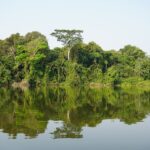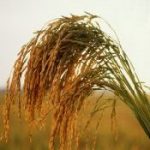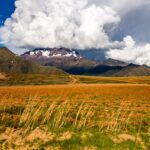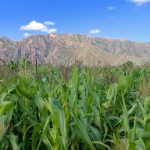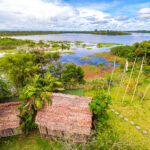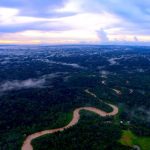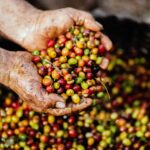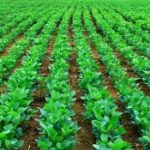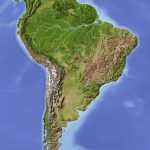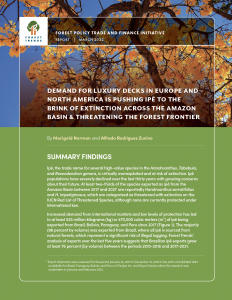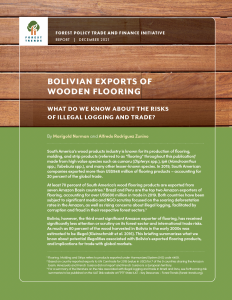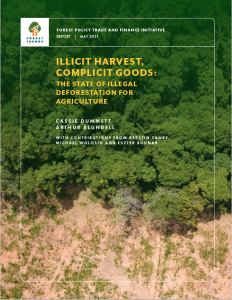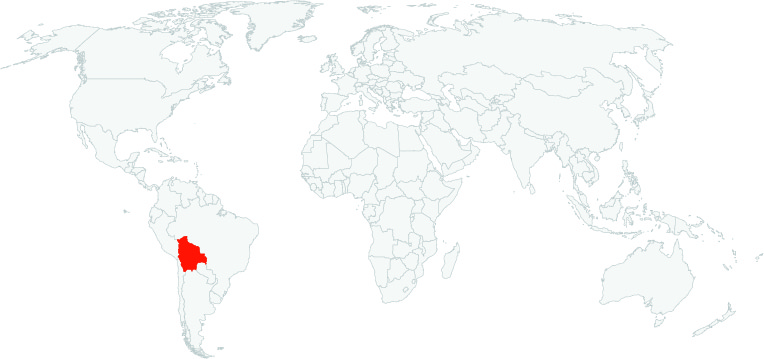
Bolivia has seen a 9.5 percent decrease in forest cover since 2000, with soaring rates of forest destruction widely reported in 2019 and 2020. Bolivia became the third highest country globally for total area of forest destruction in 2020 losing 277,000 hectares, only surpassed by Brazil and the Democratic Republic of the Congo. Around two-thirds of the deforestation in Bolivia is reportedly for conversion for industrial agriculture, with hotspots in southeast Bolivia where fires have raged through the drier Chiquitano and Chaco forests. Government efforts to diversify country exports contributed to the soaring rates of forest loss, such as a supreme decree in July 2019, which authorized the expansion of the agricultural frontier in Beni and Santa Cruz departments and allowed for new burning for agricultural purposes.
- Illegal logging is widespread and there are reports of illegally harvested Bolivian timber being trafficked across the borders and exported from Peru and Brazil.
- Corruption is a significant challenge with reports of false or fraudulent documents issued by government officials for Bolivian harvested timber.
- Loopholes in transport laws are being exploited which facilitates timber being sold without documentation.
- There is a risk that Bolivian harvested high value species are exported in contravention of export restrictions and tied to the wider illegal drugs trade.
- Enforcement and penalties remain weak and insufficient to deter illegal logging and illegal export.
Read more by downloading the Bolivia Timber Legality Risk Dashboard here.
The Gran Manupare reserve was created in January 2024 in northern Bolivia’s Pando department, making it the newest protected area in the country. However, the reserve already faces threats from gold mining along the Madre de Dios River, which forms its northern border. Logging is another threat that experts warn could enter Gran Manupare, which holds highly sought-after mahogany trees.
Indigenous communities in Latin America face extinction due to forest fires, many of them caused by illegal land conversion. This loss of culture is not unique to Bolivia. In Brazil, the Kayapo and Yanomami peoples have faced similar struggles as deforestation and illegal mining force them from their lands. The Asháninka and Awajún indigenous groups in Peru have been severely affected by forest fires in the Ucayali and Loreto regions, often caused by illegal logging and mining. In Colombia, deforestation and illegal land clearing in the Amazon have reached record levels, contributing to rising forest fires. The Tikuna and Huitoto people, who live deep in the Amazon, see their ancestral lands reduced to ash. In Ecuador, the Waorani people have been displaced by fires and oil extraction.
Environmental crimes are destroying the Bolivian Amazon. In 2023, the loss of primary forests in Bolivia increased by 27 percent and reached its highest number on record for the third consecutive year: nearly 500,000 hectares, according to the Global Forest Watch platform.
The Plundered Amazon: The Roots of Environmental Crime in Bolivia, jointly published by InSight Crime and the Brazilian think tank Instituto Igarapé, highlights the transnational and cross-border dynamics of environmental crime in Bolivia, including wildlife trafficking, illegal mercury trafficking for gold mining, and timber trafficking.
Most of the deforestation in the Bolivian Amazon is due to gold mining and widespread land clearing for agribusiness .
A series of recently published data is shining a new light on patterns of deforestation in the Amazon, revealing where crops, cattle ranching and mining are encroaching on the rainforest.
Some of the crops are well-known drivers of deforestation, such as soy, but lesser-discussed crops are also present in the region, such as rice and sorghum.
Illicit coca cultivation expanded in the Amazon basin and the Andean region the United Nations International Narcotics Control Board (INCB) indicated in its Annual Report 2023 released this March. This expansion, the report indicates, significantly impacts local ecosystems and biodiversity, leading to substantial deforestation, soil degradation, and loss of flora and fauna diversity.
Illicit drug production indiscriminately uses chemicals to boost harvests, leading to widespread contamination, while vast areas of forests are cleared to expand cultivation — giving rise to narco-deforestation.
The battle against deforestation is complex. Producing soy and beef for export benefits the agribusiness industry and powerful economic elites with ties to the government. Now, with the agriculture and cattle ranching industries hungry for new tracts of land, farmers, and ranchers are pushing deeper into the Santa Cruz department and Bolivia’s Amazon. Destruction of this vital and often neglected corner of Amazon has accelerated at an alarming rate. Between 2002 and 2023, more than 4 million hectares of primary forest, an area the size of Switzerland, were lost, according to Global Forest Watch,
This article is part of a joint investigation by InSight Crime and the Igarapé Institute on illegal mining, wildlife, timber, and drug trafficking in the Bolivian Amazon.
The overall rate of primary forest loss across the tropics remained stubbornly high in 2023, putting the world well off track from its net-zero deforestation target by 2030, according to a new report from the World Resources Institute.
The few bright spots were Brazil and Colombia, where changes in political leadership helped drive down deforestation rates in the Amazon.
Elsewhere, however, several countries hit record-high rates of forest loss, including the Democratic Republic of Congo, Bolivia and Laos, driven largely by agriculture, mining and fires.
Amboró National Park and Integrated Management Natural Area is located in the Santa Cruz department of central Bolivia, at the confluence of three different ecosystems: the Amazon, the northern Bolivian Chaco and the Andes. Amboró has been losing forest cover to illicit activities such as the cultivation of coca crops for the production of cocaine.
In Bolivia, forest loss has spread in parallel with the increase in beef exports. Some ranchers are now turning to practices that protect forests and long-term productivity.
Following a process of diplomatic negotiations and preparation to help Bolivian producers meet Chinese import requirements, the first shipment of 48 tons of beef to China was finally made in August 2019. Since then, sales have broken records. From selling 1,174 tons of meat in 2012 for $6 million to other countries, Bolivia went on to sell 17,542 tons for a value of $82.5 million in the first six months of this year, 65% of it to China. Bolivia’s record sales have coincided with deforestation in recent years, mainly in Santa Cruz, the department where most of the meat destined for export comes from.
Last year for example, Bolivia lost more primary forest than any previous year on record, almost double the amount during the Morales presidency.
The agricultural industry, which is the leading driver of deforestation in Bolivia, is centred in the Catholic and politically conservative province of Santa Cruz. Forest Trends, a DC non-profit, estimates that 83% of national deforestation has taken place in Santa Cruz and 74% of national deforestation for agro-conversion purposes is illegal.
A new Global Witness investigation reveals that US food giant Cargill has directly purchased soy from farms in Bolivia where more than 20,000 hectares of forest have been razed since 2017.
Receipts obtained by Global Witness show Cargill is systematically failing to collect key data about the origins of its soy supplies in Bolivia, without which it cannot confirm purchases are deforestation-free. These findings cast serious doubt on Cargill’s public commitments to achieving fully traceable and “deforestation-free” supply-chains in the near future.
Amazon nations have attacked in a joint declaration the “proliferation” of environmental rules in trade, echoing a growing backlash against new EU deforestation requirements.
The final document does not single out the European law specifically, but it condemns “the proliferation of unilateral trade measures based on environmental requirements and norms which constitute trade barriers”.
In the world’s largest rainforest, cocaine and deforestation are increasingly linked. Forest loss is being accelerated by a metastasis of organized crime, including a surge in cocaine production, trafficking, and consumption.
These criminal activities are supercharged by the increasingly sophisticated and powerful organizations that control the region’s production and trafficking of drugs. Put simply, drug traffickers are diversifying their portfolios into the nature crime business. As a result, large tracts of the Amazon Basin, especially in those countries controlling the largest share of the rainforest (Brazil, Peru, Colombia, and Bolivia—in that order), are wracked by an ecosystem of crime.
Mongabay has begun publishing a new edition of the book, “A Perfect Storm in the Amazon,” in short installments and in three languages: Spanish, English and Portuguese.
Chronicling the efforts of nine Amazonian countries to curb deforestation, this edition provides an overview of the topics most relevant to the conservation of the region’s biodiversity, ecosystem services and Indigenous cultures, as well as a description of the conventional and sustainable development models that are vying for space within the regional economy.
This article provides background on the EUDR and potential for technology to monitor deforestation rates and help farmers provide information about their farming practices. A pilot in Indonesia is described, as well as potential future projects in Bolivia, Colombia and Honduras.
Barclays has published new supply chain sustainability requirements for clients in forest-risk commodity sectors including beef and palm oil.
Barclay’s has added a new Forestry and Agricultural Commodities statement to its website this week. The statement stipulates that Barclays has “no appetite” to support companies directly involved in illegal forest clearance.
From the beginning of July, beef producers will not be able to undertake work in areas of the Amazon rainforest cleared or converted after 2008.
Those producing beef in South America will also need to prove that they gave deforestation-free supply chains by 2025. By the end of 2025, these firms will need to update their policy commitments on deforestation and human rights, and to monitor and report on deforestation-free product volumes.
Some 60 percent of the world’s lithium reserves can be found in the so-called lithium triangle, a region that encompasses Chile, Argentina, and Bolivia. It’s not just lithium either: Peru and Chile are the world’s two largest copper producers, while Brazil is home to 17 percent of all nickel reserves.
That has sparked a global scramble to tap the region’s wealth—one in which Chinese companies have an edge. Beyond lithium, Beijing has also struck deals for solar, wind, and hydroelectric projects across the region, pouring hundreds of millions of dollars into solar parks in Argentina and Brazil as well as signing contracts for hydroelectric projects in Bolivia and Argentina.
Part of the allure of partnering with Beijing, experts say, is the very nature of Chinese deals. China has boasted about its no-strings-attached financing, with fewer economic and political conditions than Western lenders. “[Governments] know that they’re not going to get the same level of quality by partnering with Chinese companies, but they also will get fewer headaches, fewer regulations, fewer lessons on the environment, fewer complaints from [nongovernmental organizations],” Berg said.
- Recently released satellite data from Bolivia shows that soy plantations were responsible for over 900,000 hectares (2.2 million acres) of deforestation between 2001 and 2021.
- Nearly a quarter of the deforestation was caused by Mennonite communities, who purchased the land legally in hopes of expanding their simple, rural lifestyles.
- This better understanding of Mennonite activity in Bolivia comes from a new data set from Global Forest Watch, which combined soy plantation mapping with forest loss imagery to determine soy-driven deforestation.
Demand for wood from ipê trees in the Amazon Basin could lead to their extinction if better international trade regulations aren’t implemented soon, according to a new report from Forest Trends. Ipê hardwood is in high demand in the luxury timber market, especially for outdoor boardwalks, decks and furniture, as well as hardwood floors.
Shortly after Bolivia’s Bajo Paraguá Municipal Protected Area was established in February 2021, authorities began receiving reports of invasions and deforestation in and around the new protected area.
Click here to access the Global Illegal Logging and Associated Trade (ILAT) Risk assessment tool and to download the Forest Trends User Guide describing the functionality of the ILAT Risk Data Tool.
Click here to access the Cattle Data Tool.


